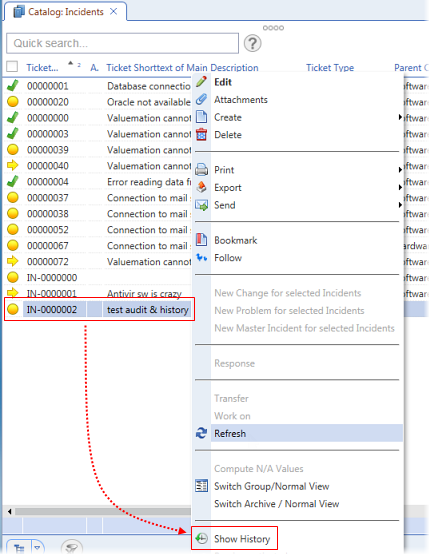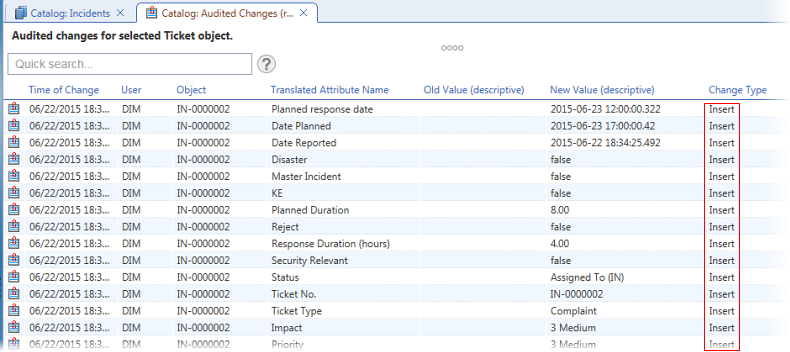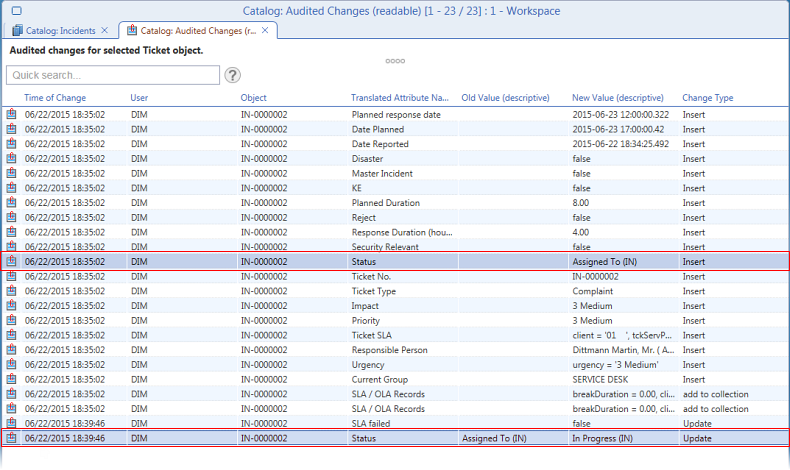Global Audit Activation
Global audit activation together with several audit activation options are done in the 'Application Monitoring' tab of Valuemation 'Global Settings'.
- Enable Audit
The option globally enables/disables auditing for all audit-enabled object types. Only users with corresponding permissions can change this setting. The Rich Client and/or Web Server have to be restarted for the setting to apply.
- Enable also audit of newly created objects
Normally only object creation and editing are audited. Selecting 'Enable also audit of newly created objects' extends auditing also to object creation. See the example below.
- Audit archived objects
Selecting 'Audit archived objects' extends auditing also to object archiving.
See 'Global Settings / Application Monitoring' for more information.
- Audit User Manager Activities
With this option selected, any user-related changes (e.g. change of the name, password , changes in groups/roles...) in the User Manager will be recorded into the history tables.
Technically speaking, changes of all plain attributes of objects:
- S3User
- S3Group
- S3Role
will be recorded. Additionally, changes of all associations between instances of these object types and, additionally, object type 'Client' will be recorded. These relationships are represented by instances of object types:
- UserGroupMapping
- RoleUserMapping
- RoleGroupMapping
- UserClientMapping
- GroupClientMapping
Example: Enable also audit of newly created objects
- Create a new ticket (Incident).
- In the 'Incidents' catalog, right-click the new Incident and select 'Show History'.

- The 'Audited Changes' catalog opens.
Here you can see the initial values of the attributes being audited.

- Now go back to the Incident (in the Incident Editor) and change one of its attributes.
In this example, we are changing the 'Status' attribute by accepting the Incident.

- Open the 'Audited Changes' catalog again.

Now you can see that the change of the 'Status' attribute have been recorded but the initial value is still available, too.